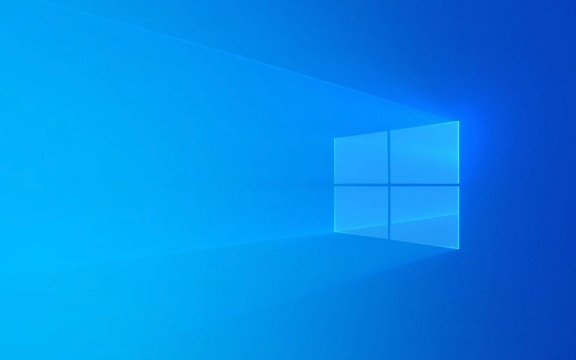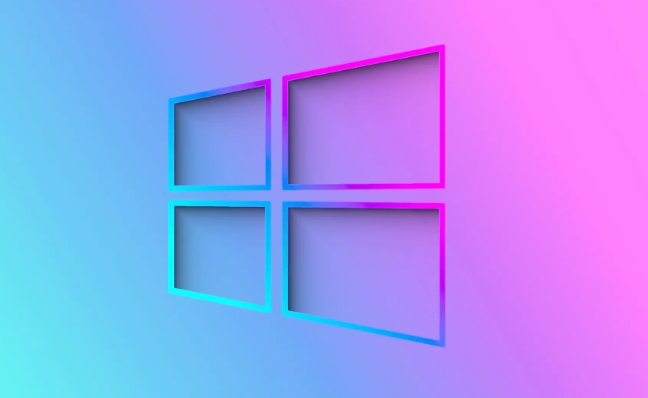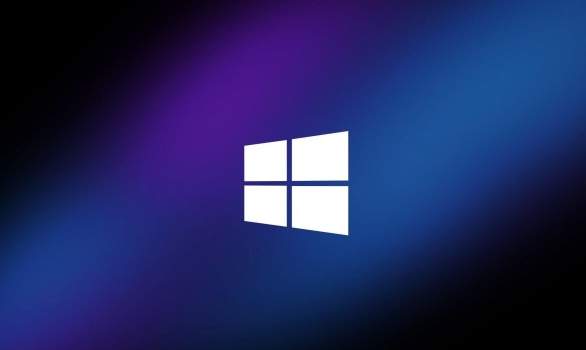 System Tutorial
System Tutorial
 Windows Series
Windows Series
 How to reduce Windows Audio Device Graph Isolation high CPU usage?
How to reduce Windows Audio Device Graph Isolation high CPU usage?
How to reduce Windows Audio Device Graph Isolation high CPU usage?
Jul 10, 2025 pm 01:08 PMThe problem of high CPU occupancy of WASAPI can be solved by the following methods: 1. Check and close the program that occupies audio resources, view and end unnecessary audio applications through the task manager and resource monitor; 2. Update or roll back the audio driver, go to the official website to download the latest driver or fall back to a stable version; 3. Adjust the audio format and sampling rate, change the default settings to 16-bit/44100Hz to reduce processing load; 4. Disable the audio enhancement function, turn off space sound effects, equalizer, etc. to reduce WASAPI pressure; 5. Restart the Windows audio service and refresh the audio process through the service management tool. In most cases, the above steps can effectively alleviate the problem. If it is invalid, you need to troubleshoot system or hardware problems.

Windows Audio Device Graph Isolation (WASAPI for short) is a process related to system audio processing. If you find that it takes up too much CPU, it may be caused by some audio applications or driver issues. Here are some practical ways to solve this problem.

Check for running audio programs
This process is mainly responsible for processing audio streams. If a player, conference software or game frequently calls audio resources in the background, it may cause a surge in CPU usage. You can open Task Manager to see which programs are using audio devices.
- Open Task Manager > Switch to Performance Tab Page > Click to open Resource Monitor
- In the "Audio" section, you can see which programs are currently accessing the audio device
- Close unnecessary audio related programs to see if there is any improvement
Some browser web pages will continue to play sounds, and they may run in the background even if they do not see a prompt. It is recommended to close the tags one by one to check.

Update or rollback audio drivers
Outdated, corrupted or incompatible audio drivers are common causes of WASAPI high CPU usage. Try updating or rolling back the driver to see if it solves the problem.
- Press
Win Xto select Device Manager - Expand Sound, Video and Game Controllers
- Right-click on your audio device (such as Realtek High Definition Audio)
- Select Update Driver or Rollback Driver
If it is a laptop, it is recommended to go to the official website to download the latest audio driver installation package instead of relying on the system to automatically update.

Adjust audio format or sampling rate
Sometimes the system default audio format is not set properly, which will keep WASAPI in a high load state.
- Right-click the taskbar volume icon > Select Sound Settings
- Click on the device properties under the current output device
- Go to Advanced Section > Try changing the default audio format (such as changing from 24-bit/48000Hz to 16-bit/44100Hz)
This change may affect the sound quality, but if you are only using it on a daily basis, switching to a standard sampling rate will usually not make a significant difference, which will help reduce the CPU burden.
Disable enhanced audio functionality (optional)
Certain audio enhancements, such as space sound, equalizer, Dolby sound, etc., may increase the processing pressure of WASAPI.
- Also enter Sound Settings > Current Audio Device > Device Properties
- Click on the enhancement function under Other device properties
- Try turning off all enhancements
In addition, similar functions may also be available in audio management software such as Realtek, remember to check them together.
If none of the above methods work, you can try restarting the Windows Audio Service:
- Press
Win Rto enterservices.msc - Find Windows Audio Services
- Right-click to select Restart
This forces the audio-related process to refresh, and sometimes temporarily alleviates the problem.
Basically these methods are all done, and in most cases, they can be done by checking the program and updating the driver. If it still doesn't work, you may need to consider system file corruption or hardware compatibility issues.
The above is the detailed content of How to reduce Windows Audio Device Graph Isolation high CPU usage?. For more information, please follow other related articles on the PHP Chinese website!

Hot AI Tools

Undress AI Tool
Undress images for free

Undresser.AI Undress
AI-powered app for creating realistic nude photos

AI Clothes Remover
Online AI tool for removing clothes from photos.

Clothoff.io
AI clothes remover

Video Face Swap
Swap faces in any video effortlessly with our completely free AI face swap tool!

Hot Article

Hot Tools

Notepad++7.3.1
Easy-to-use and free code editor

SublimeText3 Chinese version
Chinese version, very easy to use

Zend Studio 13.0.1
Powerful PHP integrated development environment

Dreamweaver CS6
Visual web development tools

SublimeText3 Mac version
God-level code editing software (SublimeText3)

Hot Topics
 How to remove password from Windows 11 login
Jun 27, 2025 am 01:38 AM
How to remove password from Windows 11 login
Jun 27, 2025 am 01:38 AM
If you want to cancel the password login for Windows 11, there are three methods to choose: 1. Modify the automatic login settings, uncheck "To use this computer, users must enter their username and password", and then restart the automatic login after entering the password; 2. Switch to a passwordless login method, such as PIN, fingerprint or face recognition, configure it in "Settings>Account>Login Options" to improve convenience and security; 3. Delete the account password directly, but there are security risks and may lead to some functions being limited. It is recommended to choose a suitable solution based on actual needs.
 I Became a Windows Power User Overnight With This New Open-Source App from Microsoft
Jun 20, 2025 am 06:07 AM
I Became a Windows Power User Overnight With This New Open-Source App from Microsoft
Jun 20, 2025 am 06:07 AM
Like many Windows users, I am always on the lookout for ways to boost my productivity. Command Palette quickly became an essential tool for me. This powerful utility has completely changed how I interact with Windows, giving me instant access to the
 How to uninstall programs in Windows 11?
Jun 30, 2025 am 12:41 AM
How to uninstall programs in Windows 11?
Jun 30, 2025 am 12:41 AM
There are three main ways to uninstall programs on Windows 11: 1. Uninstall through "Settings", open the "Settings" > "Apps" > "Installed Applications", select the program and click "Uninstall", which is suitable for most users; 2. Use the control panel, search and enter "Control Panel" > "Programs and Functions", right-click the program and select "Uninstall", which is suitable for users who are accustomed to traditional interfaces; 3. Use third-party tools such as RevoUninstaller to clean up more thoroughly, but pay attention to the download source and operation risks, and novices can give priority to using the system's own methods.
 How to run an app as an administrator in Windows?
Jul 01, 2025 am 01:05 AM
How to run an app as an administrator in Windows?
Jul 01, 2025 am 01:05 AM
To run programs as administrator, you can use Windows' own functions: 1. Right-click the menu to select "Run as administrator", which is suitable for temporary privilege hike scenarios; 2. Create a shortcut and check "Run as administrator" to achieve automatic privilege hike start; 3. Use the task scheduler to configure automated tasks, suitable for running programs that require permissions on a scheduled or background basis, pay attention to setting details such as path changes and permission checks.
 Windows 10 KB5061087 fixes Start menu crash, direct download links
Jun 26, 2025 pm 04:22 PM
Windows 10 KB5061087 fixes Start menu crash, direct download links
Jun 26, 2025 pm 04:22 PM
Windows 10 KB5061087 is now rolling out as an optional preview update for those on version 22H2 with Start menu fixes.
 Windows 11 Is Bringing Back Another Windows 10 Feature
Jun 18, 2025 am 01:27 AM
Windows 11 Is Bringing Back Another Windows 10 Feature
Jun 18, 2025 am 01:27 AM
This might not be at the top of the list of features people want to return from Windows 10, but it still offers some usefulness. If you'd like to view the current minutes and seconds without turning on that display in the main taskbar clock (where it
 Microsoft: DHCP issue hits KB5060526, KB5060531 of Windows Server
Jun 26, 2025 pm 04:32 PM
Microsoft: DHCP issue hits KB5060526, KB5060531 of Windows Server
Jun 26, 2025 pm 04:32 PM
Microsoft confirmed that the DHCP server service might stop responding or refuse to connect after the June 2025 Update for Windows Server.
 Building Your First Gaming PC in 2025: What You Actually Need
Jun 24, 2025 am 12:52 AM
Building Your First Gaming PC in 2025: What You Actually Need
Jun 24, 2025 am 12:52 AM
In the past, I always viewed the i5 lineup as anemic when it came to gaming. However, in 2025, a mid-range CPU is more than enough to start your gaming journey. Many games still don’t fully utilize multi-core performance as well as they could, so





